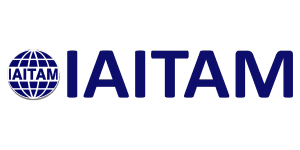IT Asset Management and Vendor Management: Better Together

In today’s complex business environment, effective IT Asset Management (ITAM) is about more than just tracking hardware and software—it’s also about fostering strong partnerships with vendors. When done correctly, ITAM can work hand in hand with vendor management to drive value, reduce costs, and enhance compliance across the organization. However, finding synergy between these two areas is often easier said than done.
The Overlap Between ITAM and Vendor Management
While IT Asset Management and Vendor Management may not all roll up to the same leadership, they share several common goals, including cost control, risk management, and strategic alignment with business objectives.
IT Asset Management (ITAM) focuses on managing the lifecycle of IT assets—hardware, software, and otherwise—from procurement to disposal. It ensures that the organization has the right tools to operate effectively while maintaining control over costs, compliance, and risk.
Vendor Management, on the other hand, is concerned with overseeing relationships with suppliers and service providers. This includes negotiating contracts, ensuring service delivery, managing performance, and mitigating risks associated with third-party partnerships.
The intersection of these two functions offers numerous opportunities for collaboration. Let’s explore how IT asset managers can leverage vendor management practices to create a cohesive strategy that benefits the entire organization.
Aligning Objectives for Maximum Impact
To achieve synergy, both ITAM and vendor management teams need to align their objectives and collaborate on shared goals. Here are some ways to get started:
Establish Clear Communication Channels
Just like with most units within ITAM, frequent and transparent communication between ITAM and vendor management is key. Regular meetings, joint planning sessions, and shared documentation help both teams stay informed about each other’s priorities, upcoming renewals, and changes in the vendor landscape. It is all to easy for a renewal to be coming up, but only one “side” has it on their radar. This will almost certainly not end well!
Integrate Processes and Tools
Integrating ITAM and vendor management processes can streamline operations and reduce redundancies. For example, using a centralized repository that incorporates vendor data can help track software licenses, warranties, and service level agreements (SLAs) in one place. This integrated approach makes it easier to monitor compliance, identify cost-saving opportunities, and ensure that vendors deliver on their contractual obligations.
Collaborate on Contract Negotiations
Vendor management teams often take the lead in negotiating contracts, but IT asset managers can bring valuable insights to the table. By working together, they can ensure that contract terms align with asset management needs—such as flexible licensing arrangements, maintenance agreements, and end-of-life support. Involving ITAM in negotiations can also help identify hidden costs, prevent over-purchasing, and avoid vendor lock-in. ITAM has almost certainly lessons learned from the past that can improve our results. The SAM team, for example, will understand that sometimes a cheap license type up front, may end up costing more to manage than the initial savings.
Leveraging Vendor Management for ITAM Success
An effective vendor management strategy can significantly enhance IT Asset Management efforts. Here’s how:
Optimizing Costs and Spending
Vendors play a crucial role in the cost structure of IT assets. By managing vendor relationships effectively, ITAM teams can negotiate better pricing, secure volume discounts, and leverage competitive bids to reduce overall spending. Additionally, consolidating purchases with fewer vendors can lead to stronger relationships and more favorable terms. These stronger relationships can make the eventual audit easier to navigate.
Ensuring Compliance and Reducing Risk
Vendor management is critical in maintaining compliance with licensing agreements, data protection regulations, and internal policies. A coordinated approach allows ITAM and vendor management to identify potential risks—such as non-compliance with software licenses or data security issues—before they become costly problems. Regular vendor audits and performance reviews can help ensure that all parties adhere to agreed standards and contractual terms. Thorough management of our vendors will include the training that they need to be able to remain in compliance with our organization.
Improving Vendor Performance and Accountability
Vendor performance has a direct impact on the quality and availability of IT assets. By working closely with vendor management, IT asset managers can establish performance metrics, track them, and hold vendors accountable for their commitments. This collaboration can lead to improved service levels, faster issue resolution, and greater overall satisfaction with vendor-provided assets and services.
The Role of IT Asset Managers in Vendor Management
So, how can IT asset managers actively contribute to vendor management efforts?
Develop Vendor Profiles: Work with vendor management to create comprehensive profiles that include not just contact details, but also insights into their product roadmaps, market position, and financial stability. These profiles can help anticipate changes that could affect IT assets, such as product discontinuations or shifts in support policies.
Participate in Vendor Evaluations: Be actively involved in the vendor selection process. Provide input on asset requirements, compatibility with existing systems, and long-term strategic needs. This ensures that new vendors align with ITAM goals from the start.
Monitor Contractual Obligations: Keep a close eye on key contract terms, such as renewal dates, service level agreements, and penalties for non-compliance. By maintaining an updated inventory of these details, IT asset managers can avoid surprises and ensure smooth contract renewals. Remember that vendor evaluations don’t stop after we get into a partnership.
Finding Balance: Avoiding Silos and Building Bridges
One common pitfall in many organizations is the tendency to operate in silos—where ITAM and vendor management function independently with little collaboration. This lack of working together lead to inefficiencies, missed opportunities, and increased risk. To avoid this, IT asset managers should focus on building strong relationships with their vendor management counterparts.
Promote Cross-Functional Training: Encourage team members to learn about each other’s roles, responsibilities, and challenges. This helps build relationships and understanding while identifying areas where both teams can collaborate more effectively. If we never talk, how can we know each other?
Share Success Stories: Celebrate joint successes and highlight the benefits of collaboration to the broader organization. For example, share successes where the partnership between ITAM and vendor management resulted in significant cost savings or risk reduction. It can be all to easy to just move on to the next project or “fire” without getting the benefits of recognition and celebration. Why would folks want to keep working together or supporting each other if we don’t take time to recognize the success it has brought the organization?
Conclusion
When IT Asset Management and Vendor Management join forces, the organization stands to gain a great deal. From cost optimization and risk management to improved vendor performance and strategic alignment, the potential benefits are significant. By aligning objectives, integrating processes, and fostering collaboration, IT asset managers can be truly impactful players to the entire system, not just our teams.
